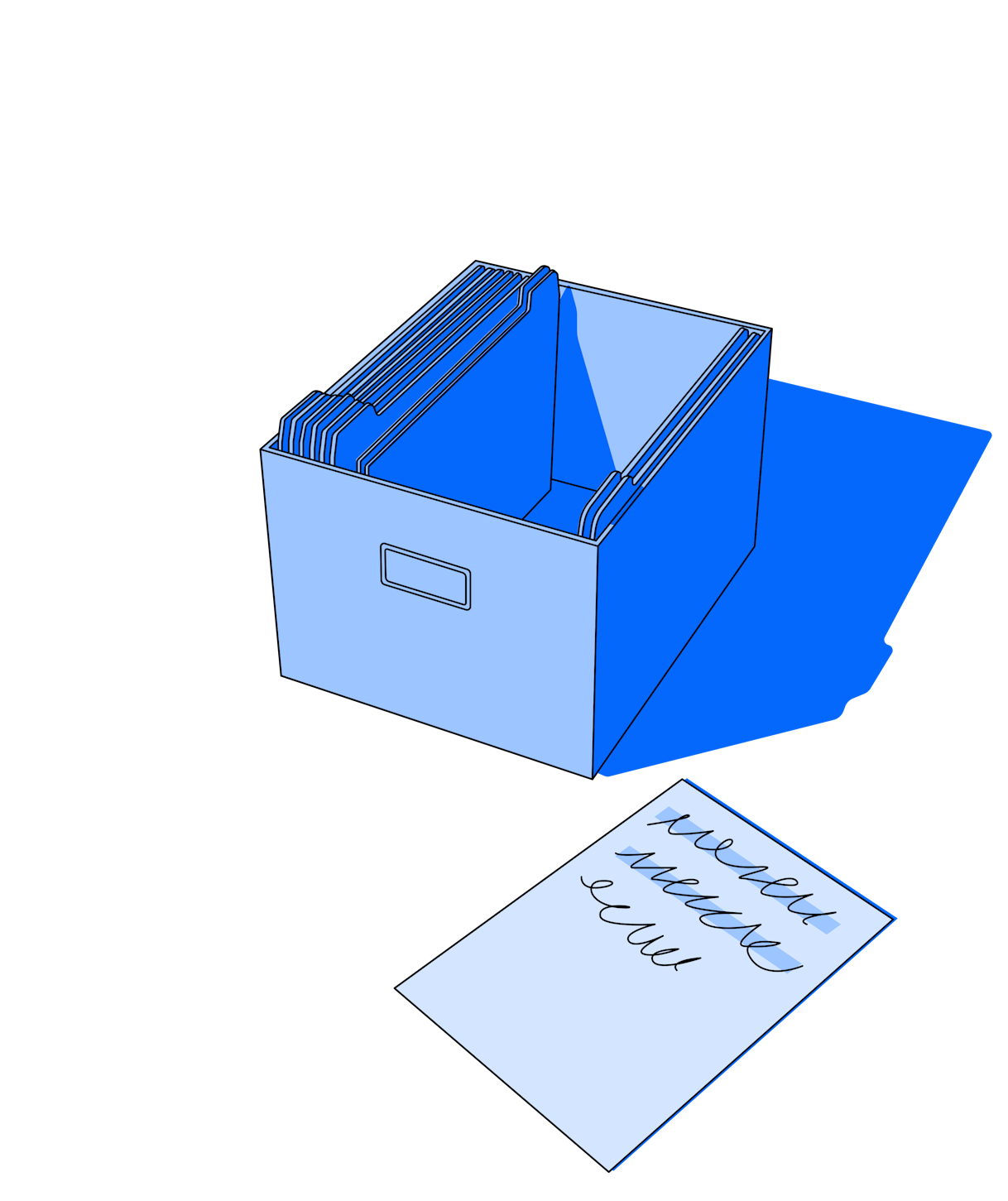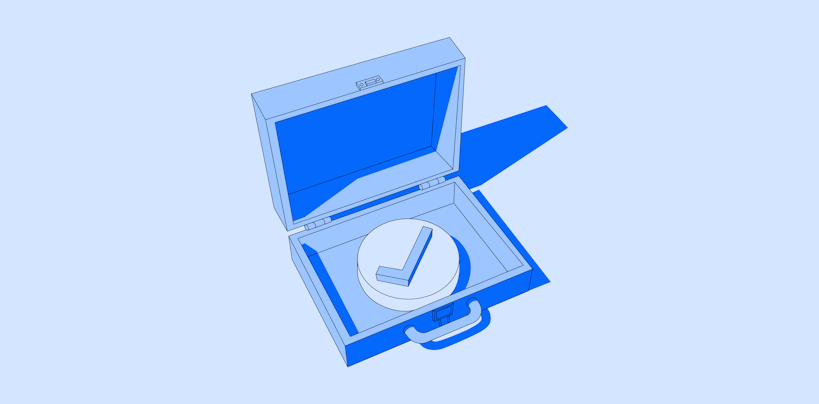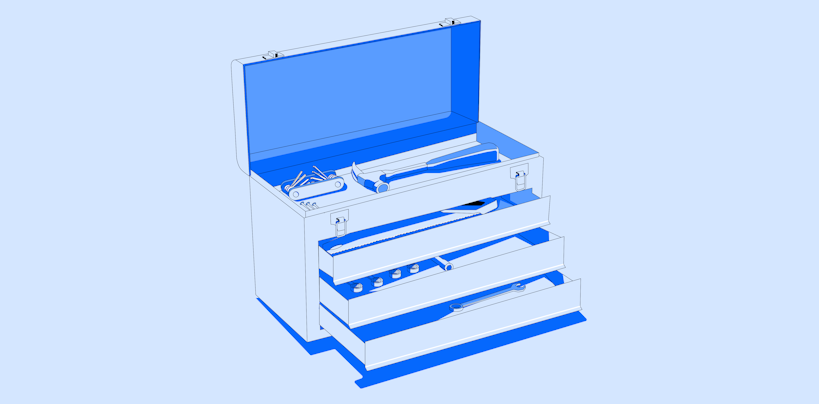The way companies build products is fundamentally broken. This is a belief I’ve had since launching Maze in 2018, and it’s never been truer than now. It stems from a dilemma that’s holding many companies back: the idea that you can either learn from your users or be fast to market. For too long, companies have been forced to choose between rapid development without user insights or investing months into research before bringing products to market. But there's finally a groundswell building around a path forward that eliminates this compromise. In this article, I aim to dive into Maze’s perspective on this tradeoff between building fast and building the right product that truly meets users' needs.
An outdated tradeoff: speed versus user insights
Companies win when they build the right product for their users faster than their competitors, but the fastest path to that right product has changed. Rewind to the early days of digital products and platforms, companies spent months or even years on software development, mirroring the timelines of physical product creation. User insights were gathered along the way, through lengthy development cycles, often culminating in CD-ROM (remember those?) releases available in brick-and-mortar stores.
The rise of the Web ushered in a new era characterized by a "build fast, break things" approach, championed by tech giants like Google and Amazon. This shift prioritized speed and continuous product releases, with being first to market becoming the competitive advantage. But as the industry raced towards faster development, the practice of user research struggled to keep pace, leading to a disconnect between speed and user-centricity. This approach essentially shifted the pattern from learning before building to building before learning. Companies began to rely on product analytics and user feedback post-development to understand user needs, rather than gathering these insights upfront. As a result, product teams often made critical decisions without the right user data.
The cost of this practice is staggering. Half of developers' time is spent on rework, wasting billions on building the wrong products. This doesn't even account for the opportunity cost of spending resources on the wrong strategic initiatives, the cost of lost business due to broken flows, and the increased cost of support for maintaining the wrong product, to name a few. "The surprising fact is that companies large and small, established corporate giants as well as brand new startups, fail in 9 out of 10 attempts to launch their new products. They unnecessarily burn through billions of dollars as they try to force their new products into markets where no one is waiting to buy. Yet time and again, they all return to the same processes that produce failure," wrote Steve Blank in the Four Steps to the Epiphany.
The emphasis on speed has led to quicker iterations, but without the necessary user insights, these iterations often lead to disastrous outcomes. We’ve become faster at being wrong, but we’re not better at being right the first time.
The old way doesn’t cut it anymore.
There’s a better path to the right product, one where companies can learn from users as quickly as they build and iterate at every stage of development.
Dramatic technology and organizational shifts are solving the tension between speed and learning. Modern design tools have enabled faster testing during development through rapid prototyping. User research has moved out of physical usability labs and into the remote-first world, and has been complemented by ever more sophisticated tools for collecting user insights online. New platforms are making user insights available more broadly across organizations—and just in time, as 55% of product teams say the demand for user research has increased in the past year, according to our 2025 Future of User Research Report.
While the rest of the product stack has evolved to unlock speed and cross-functional collaboration—think Figma for design, Amplitude for product analytics, and GitHub for engineering–research has lagged behind. Product teams are still stuck with outdated research solutions that require expert researchers to spend hundreds of hours looking at video recordings to extract user insights, leading to bottlenecks and slower decision-making.
Today, the most innovative Product, Design, and Research leaders recognize the need to bridge this gap effectively. These forward-looking companies are redefining how they approach user research and product development. By integrating continuous user feedback seamlessly into the development process, they ensure their products are not only first to market but also first to meet user needs.
This new approach, coupled with a modern research tech stack that integrates advanced tools and AI to address the challenges that have traditionally impacted research, empowers organizations to understand user needs rapidly and continuously. This allows teams to focus on innovation, make informed choices, and ensure the fastest path to the right product starts and ends with users.
User insights at the speed of product development
At Maze, we're excited to power companies who know they no longer have to sacrifice user insights for speed to market. Maze is the user research platform that makes products work for people, by making user insights available at the speed of product development. But, how are we doing this?
Get insights in hours, not weeks
Traditionally, research has been impeded by a slow and meticulous process, involving specialized teams fielding requests, and dedicating weeks or months to recruiting participants, constructing studies, and analyzing and disseminating findings. With Maze, research has never been faster. Teams can create a study in minutes, recruit the right audience, and receive rapid insights that drive decisions. As a result, they can quickly collect and incorporate user feedback into all stages of product development.
Research is hard. Maze is easy.
According to our 2024 Future of Research Report, research democratization fosters a culture of learning and empowers decision-making. Consequently, the role of researchers has evolved from operational to educational, focusing less on running studies and more on empowering the broader product team to make informed decisions. We’re facilitating this transition by making research a team sport, no matter the organization’s research maturity level. We empower entire teams to easily collect user insights when they need them, from ideation to production. While it may seem counterintuitive, making research a company-wide priority ultimately strengthens the resilience and impact of research efforts.
Decisions, not just data
For too long, user research platforms have helped teams collect mountains of data while leaving them with the painstaking tasks of analyzing hours and hours of video content, and manually building reports to share with stakeholders. Maze does the heavy lifting for our customers so they can quickly and easily build influence, involve stakeholders, and show the key evidence that drove a recommendation. With the most robust selection of question types for any study and deep quantitative and qualitative results data, we help power critical business and product decisions every day.
In 2023, our enterprise customers answered more than 6,500,000 questions with Maze, powering 25,500+ critical product and business decisions.
Share
Ditch the compromise
In a world where everyone can build, how fast you push something to market doesn’t matter anymore. It’s what you build that matters. There’s no longer room for compromise between rapid development and meeting user needs.
This requires a fundamental change where user research and product development work hand-in-hand. Maze removes this outdated tradeoff by combining deep user insights with rapid development cycles. We don’t just speed up research—we transform it, ensuring that user feedback drives every decision and iteration.
The winners of tomorrow will blur the line between themselves and the users they are solving for. We are excited to spearhead this shift, placing users at the center of every product decision. Our mission continues, and we invite you to join us. Stay tuned for a big update next week about our latest product advancements.




